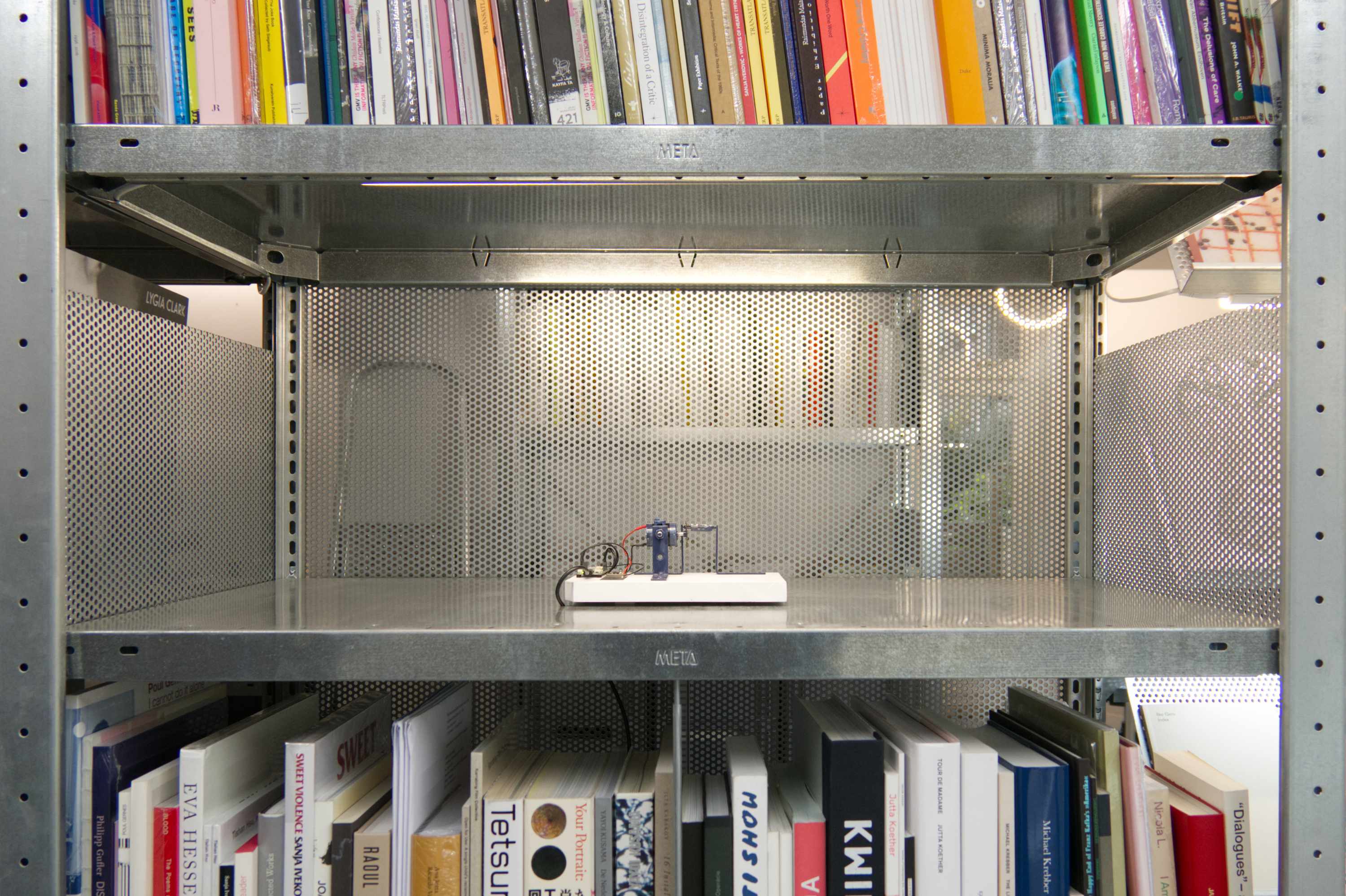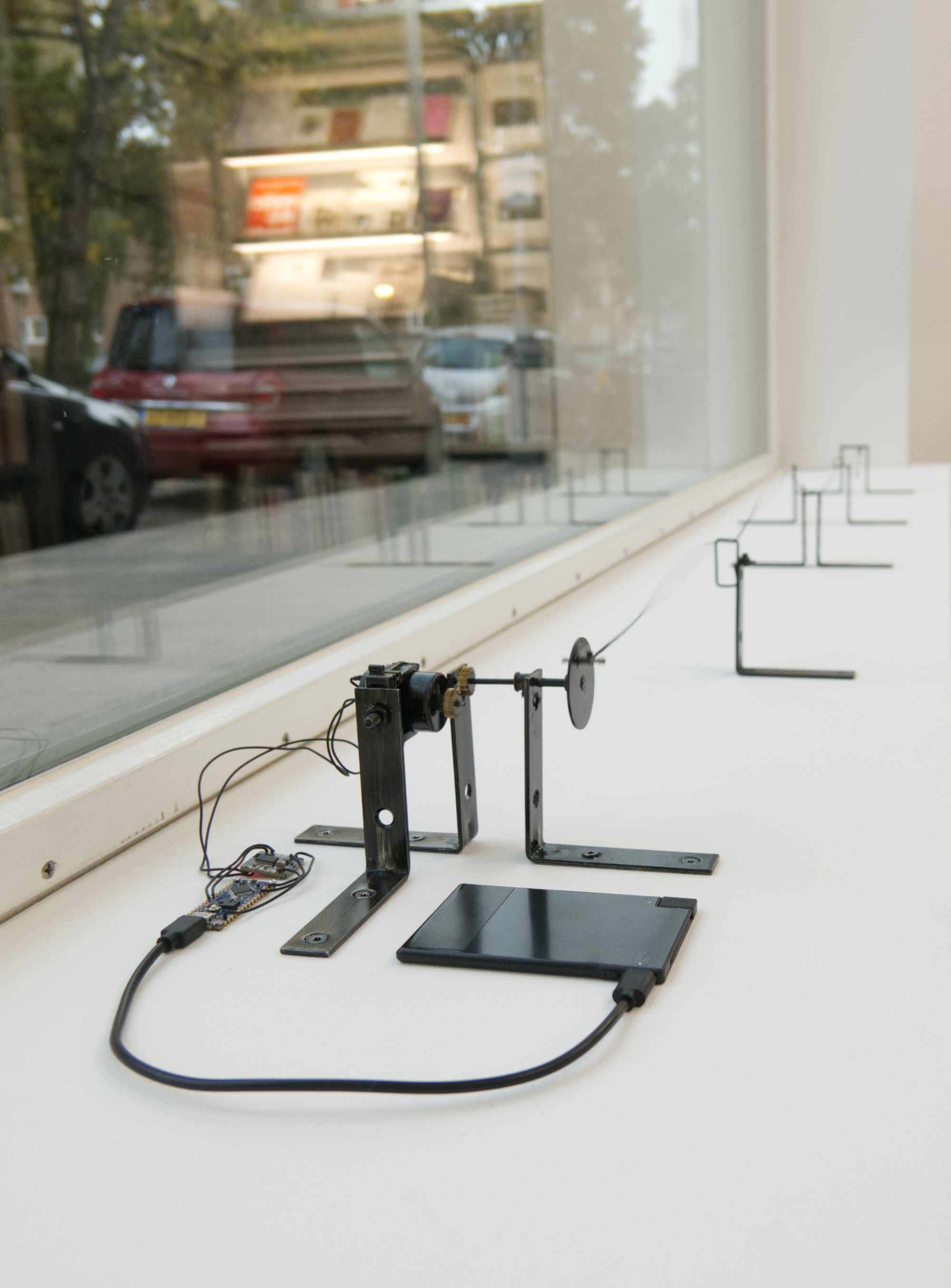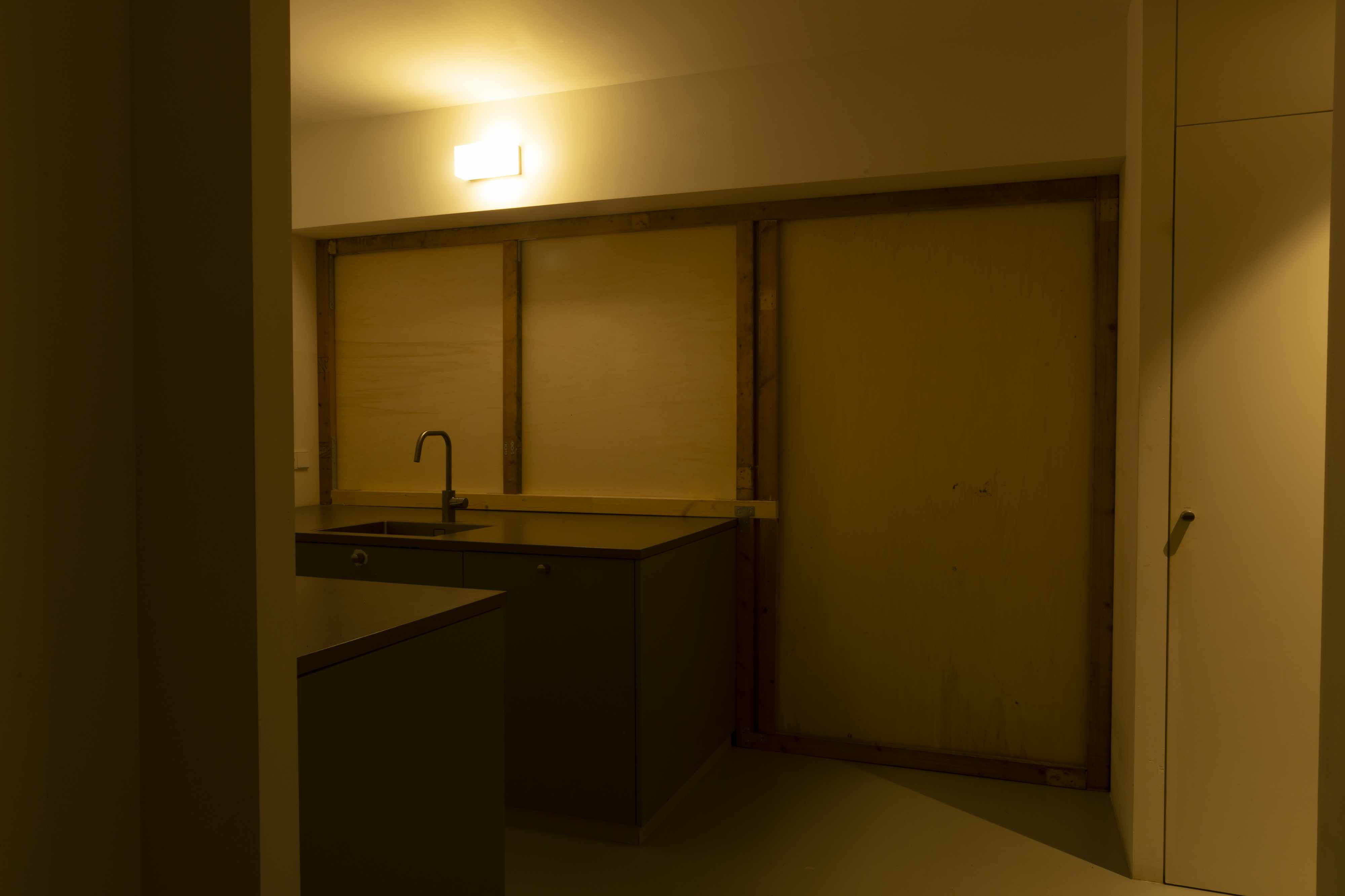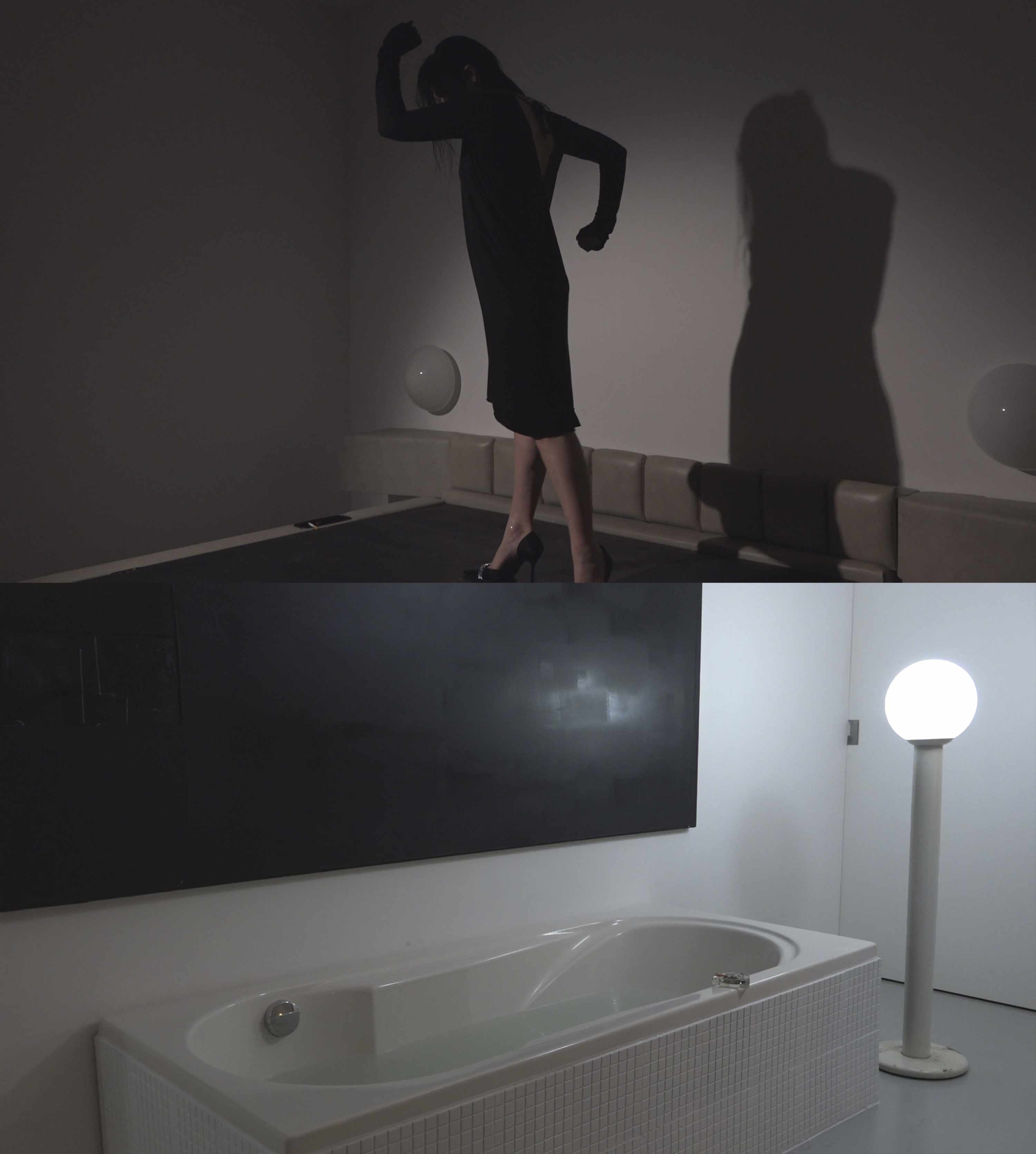Michèle Graf and Selina Grüter
Moving Sculptures
T.A. DÉCOR
A Chamber Play
BOOKS at / GDL525
22-10-2025
Machines.
The Big Clock (1946) by Kenneth Fearing is considered a classic of noir detective fiction, even if nowadays the film adaptation (1948) is screened a bit less frequently than other examples of the genre. The titular time-piece is a massive clock (imagine the size of a room, like a 1950s computer) built into the headquarters of a media conglomerate. In the film, the machine synchronizes all of the company’s clocks across its several offices, each specializing in a different niche publication. Fearing was a committed socialist, so unsurprisingly the clock has wider metaphorical resonances to corporate power and the emerging postwar society of control. But the “big clock” also refers to the novel’s precise, even inexorable plot device: the protagonist, an editor at Janoth Publications’ true crime imprint, must expose his boss (Mr. Janoth) as a murderer, but at the same time is tasked with finding another man being framed for the crime: himself.

All of this could be transposed handily to a modern remake (as it was in 1987 with No Way Out) with perhaps one notable exception: the clock. While atomic-level synchronization is a critical factor in the contemporary corporate and financial infrastructure, it certainly does not require a room-sized mechanism within which our protagonist could hide away, as in Fearing’s original. The physical clock is no longer the symbol of cybernetic coordination, but rather a nostalgic piece of décor. Obsolescence, then, is one way to approach the tiny clock parts in Michèle Graf and Selina Grüter’s mechanical works in “Moving Sculptures” at the Amsterdam art bookshop BOOKS at. Previously shown at Kevin Space in Vienna (“Clock Work,” 2022) and Fanta-MLN in Milan (“More Clock Work,” 2023), Graf and Grüter’s mechanisms repurpose springs, wires and wheels from clocks in conjunction with other mechanical and digital hardware so that they spin, click and buzz according to new logics. I would be tempted to agree that the uselessness (perhaps a synonym of obsolescence) to which the artists put these pieces is a defining quality of the work, if only I could figure out what a clock was actually meant to do in the first place.
Sure, clocks measure time, but that seems not so much a quality of the device as a quality of our observance of them. Clocks don’t really act on a physical material in any obvious way; their action is more or less self-contained. In previous presentations, Graf and Grüter have even linked their moving sculptures to off-site sensors, endowing their devices with more, rather than less, connection, however distantly, to the world around them. And who can say that “being art” is any more autonomous or hermetic than “telling time”? It seems to me to be about damn time that we got the relevant experts together to decide what exactly a clock did besides spin. It sat there on your parents’ wrists and in your grandparents’ pockets, but what was it actually up to that whole time? In any case, perhaps it is more accurate to say that Graf and Grüter’s sculptures liberate these devices not from function, but from measure.

In the setting of a bookshop, the pieces are also liberated from a pedestal, which the artists had employed in previous presentations. Here the two works on display, both titled simply Clock Work, are built into the infrastructure of the shop. The longer of the two (2023) sits on the storefront window, a small motor continuously waggling a wire strung between L-brackets spaced at short intervals. The other, smaller sculpture was the first of the “Clock Work” series (2022). The work was first presented at the exhibition at Kevin Space, where it was linked via a sensor to the comings and goings of trains in Vienna, which would prompt it to occasionally spin a small, fan-like part about the size and shape of a razorblade. In “Moving Sculptures,” the work is not connected to a sensor, but rather repeats this sequence as a pre-programed loop; the trace of a timetable. The piece is installed on a metal shelf that ordinarily displays the rare or noteworthy books in stock, objects of intense lust if not obsession for some. Such feelings of yearning are not alien to these works; after all, the duo began these sculptures not, at first, out of an interest in time, but rather with a collective desire to build a machine.¹ As simple as this statement is (don’t all artworks begin with a desire to do something?), it suggests that the proper coordinates with which we might start to understand “Clock Work” are desire and machines. And in that particular relation, there is always the possibility that desire begins to take increasingly impersonal forms. When I asked Graf about whether there were any parameters around the movement of the longer piece in the window, she replied that it had been modified to run continuously, “mostly due to a desire for constant energy.” While it may be willful misinterpretation on my part, I wonder who, or what, desires the energy: it is, after all, the mechanism that “cathects” it. Here, rather than anthropomorphism, I would suggest we are in the inverse territory of desire’s depersonalization (with all due credit to Deleuze and Guattari).
The opening of “Moving Sculptures” happened to overlap with the last weekend of “A Chamber Play,” a video installation by T.A. DÉCOR, another collaborative duo, Rin Suemitsu and Filippo Tocchi, at GDL525. A coincidence, but a happy one: if Graf and Grüter tinker with the loop of a machine, “A Chamber Play” foregrounds the loop as a question of habitus rather than technics. The eponymous video work at the center of the installation takes place entirely within the confines of a small, aseptically clean apartment; it also happens to be the apartment that GDL525 occupies, which is where Suemitsu and Tocchi, along with Mina Tomic (who also performs in the video), lived while developing the work over the course of a year. In “A Chamber Play,” we have definitively stepped inside the “big clock.”

For the production of the film, T.A. DÉCOR built temporary walls around the apartment’s living room, including over any windows or entrances to other rooms. Visitors to the space will first see this wall from the back, its functional construction reminiscent of scenic flats or film sets, and enter the exhibition through a gap where one of the panels has been removed. A large black sofa sits in the middle of the room, which, while not in the film, seems akin to its furnishings, which feel provisional and prop-like, with the exception of a bathtub, in which Suemitsu soaks for most of the video. The tub feels real, substantial, until I notice there is no tap.
The video has a few cuts, but I am told by T.A. DÉCOR that it was shot in a single take. The camera in A Chamber Play is often panning in a circular movement, a necessity considering the tight space in which it was shot. To film the entire piece in one take required the performers to duck behind the camera once out of the frame, suggesting a pair of interlocking orbits, that of the camera around the set, and of the performers around the camera. As much as the mise-en-abyme of the video inside the set in which it was shot, inside the apartment in which the piece was developed, this rotational movement is what invokes the loop of domestic life isolated within A Chamber Play’s stylized construction. It is as if, having blocked up every exit, the circulation of the inhabitants is deflected inward. Confined within the living room, the loop of people, cameras, and time is, if not accelerated, at least concentrated in the efficiency of the room's sparse but deliberate furnishings, the abstraction of its characters’ utterances. Everything in the video feels stripped down, aerodynamic.

GDL525 is housed within the Gouden Leeuw apartment towers, designed in 1974 by Dutch architect Joop van Stigt, and declared a city monument in 2021. Van Stigt approached the building as a proper structuralist would: shaping the form around its possible use by an inhabitant, what is known as a building’s program. By blocking up the circulation that forms the core of the apartment’s program, T.A.DÉCOR have effectively “liberated” this “machine for living” from its function to an even more extreme degree than Graf and Grüter’s repurposed clocks. Rather than the pleasure and desire that motivated the “Clock Works,” in A Chamber Play the autonomy of the machine, in this case the apartment complex, but also “the domestic” as a form of social organization, feels claustrophobic, even desiccated.
The loops that “A Chamber Play” and “Moving Sculptures” tinker with are not only those created by the technical fields of architecture or horology; they are also the kind of big systems allegorized by Fearing’s big clock through the ways that time, work, private and public life are already given machinic forms and rhythms. If our newest big machines (such as the artificial intelligence which I have no doubt will be writing the vast majority of art criticism in the near future) are even remotely effective, it is because they reflect this already rote organization of contemporary life. Machines, it turns out, are things done by people to other people. Perhaps the repetition that seems to be the core of the machine was originally mimetic: that it first doubles what is machinic in us, and in a classic form of disavowal, we project that back into machines, positioning them as the cause of what they in fact only mirror.
- Tony Hildebrandt, “Free Wheels: On Michèle Graf and Selina Grüter’s ‘More Clock Work’ at Fanta-MLN, Milan,” Mousse Magazine, 31 May, 2023. https://www.moussemagazine.it/magazine/michele-graf-selina-gruters-toni-hildebrandt-fanta-mln-milan-2023/.